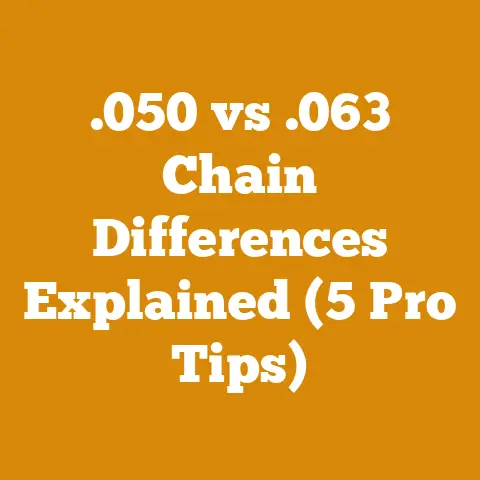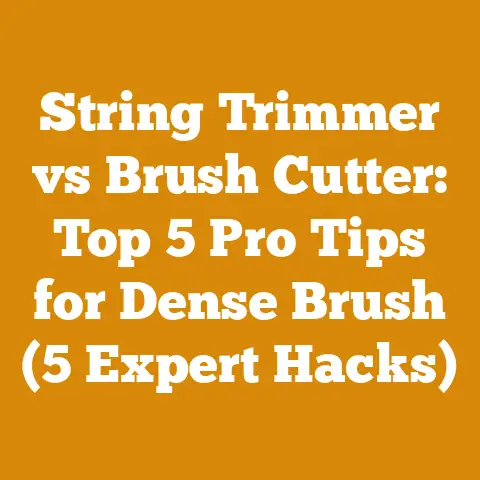MechMaxx Stump Grinder Tips (7 Pro Techniques for Homeowners)
Let’s face it, sometimes the aftermath of tree removal leaves us with an unsightly and potentially hazardous stump. While complete tree removal is often the name of the game, stump grinding can sometimes be overlooked. In this article, I will not be focusing on low-maintenance options such as planting ground cover or using chemical stump removers; instead, I’ll be focusing on the “MechMaxx Stump Grinder Tips (7 Pro Techniques for Homeowners)” and diving deep into the strategies and techniques that transform stump grinding from a chore into a manageable, even satisfying, task. I’ve been in the wood processing and firewood preparation industry for years, and I’ve seen it all – from backyard blunders to near-professional setups. Let’s get started.
Mastering Stump Grinding: 7 Pro Techniques for Homeowners
Stump grinding can seem daunting, but with the right approach, it’s a project any homeowner can tackle. This guide goes beyond basic instructions, offering insights I’ve gained over years of experience. I’ll share my personal experiences, industry best practices, and data-backed tips to ensure your success.
1. Project Planning: The Foundation of Success
Before you even think about firing up that stump grinder, you need a solid plan. This isn’t just about knowing where the stump is; it’s about understanding the entire scope of the project.
Assessing the Stump and Surroundings
- Stump Size and Type: Is it a massive oak stump or a relatively small pine? The size and wood density will significantly impact the time and effort required. I once underestimated the density of a seasoned maple stump and ended up spending twice as long as I anticipated.
- Root System: How extensive is the root system? Are there surface roots that need to be addressed? Knowing this will help you determine the grinding radius and prevent damage to surrounding landscaping.
- Obstacles: Are there buried utilities, rocks, or fences nearby? Marking these out is crucial for safety and preventing damage to your equipment or property. Call 811 (in the US) before you dig or grind – it’s a free service that can save you a world of trouble.
- Soil Type: Sandy soil is much easier to grind than clay. Consider the soil type when estimating the time and effort required.
Safety First: Identifying Potential Hazards
- Personal Protective Equipment (PPE): This is non-negotiable. At a minimum, you’ll need safety glasses, hearing protection, work gloves, and sturdy boots. I’ve seen too many accidents that could have been prevented with proper PPE.
- Bystander Safety: Keep children and pets away from the work area. Flying debris can be dangerous.
- Machine Inspection: Before each use, inspect the stump grinder for any signs of damage or wear. Check the teeth, belts, and fluids. A malfunctioning machine is a recipe for disaster.
- Emergency Plan: Know where the nearest hospital is and have a way to contact emergency services. It’s always better to be prepared.
Setting Realistic Goals and Timelines
- Time Estimate: Based on the stump size, type, and soil conditions, estimate how long the project will take. Be realistic – it’s always better to overestimate than underestimate.
- Budget: Factor in the cost of renting or buying a stump grinder, fuel, PPE, and any disposal fees.
- Contingency Plan: What will you do if you encounter unexpected obstacles or the weather turns bad? Having a backup plan will help you stay on track.
2. Choosing the Right Stump Grinder: Matching the Tool to the Task
Stump grinders come in various sizes and power levels. Selecting the right one for your project is crucial for efficiency and safety.
Types of Stump Grinders
- Walk-Behind Stump Grinders: These are the most common type for homeowners. They’re relatively easy to operate and maneuver, but they may struggle with very large or dense stumps.
- Tow-Behind Stump Grinders: These are more powerful than walk-behind models and are suitable for larger stumps. However, they require a vehicle with a tow hitch.
- Hydraulic Stump Grinders: These are the most powerful type of stump grinder and are typically used by professionals. They can handle even the largest and most difficult stumps.
- Handheld Stump Grinders: These are smaller and lighter but may only be suitable for small stumps or roots.
Key Considerations When Choosing a Stump Grinder
- Stump Size: The size of the stump is the most important factor in determining the appropriate size of the stump grinder.
- Power: More power is generally better, especially for dense stumps.
- Maneuverability: Consider the terrain around the stump and choose a machine that is easy to maneuver in that space.
- Rental vs. Purchase: If you only need to grind a few stumps, renting is usually the more cost-effective option. If you have a lot of stumps to grind or plan to use the machine frequently, purchasing may be a better investment.
Rental Checklist: Ensuring a Smooth Experience
- Inspection: Before renting, thoroughly inspect the machine for any damage or wear.
- Instructions: Make sure you understand how to operate the machine safely and effectively. Ask the rental company for a demonstration.
- Maintenance: Inquire about the maintenance schedule and any specific requirements.
- Return Policy: Understand the rental company’s return policy and any fees for late returns or damage.
3. Preparing the Stump: Setting the Stage for Efficient Grinding
Proper preparation can significantly reduce the time and effort required for stump grinding.
Clearing the Area
- Remove Debris: Clear away any rocks, branches, or other debris around the stump. These can damage the stump grinder or become projectiles.
- Expose the Root Flare: Dig around the base of the stump to expose the root flare. This will allow you to grind the stump below ground level.
- Mark Utilities: As mentioned earlier, call 811 to mark any buried utilities.
Cutting the Stump
- Lower the Stump: If possible, cut the stump as close to the ground as possible. This will reduce the amount of grinding required. A chainsaw is your best friend here. I prefer using a chainsaw with a carbide chain because it will take the abuse of hitting dirt and small rocks.
- Create a Level Surface: If the stump is uneven, use a chainsaw to create a level surface. This will make it easier to operate the stump grinder.
Protecting Surrounding Vegetation
- Cover Nearby Plants: Use tarps or plywood to protect nearby plants from flying debris.
- Water the Area: Wetting the soil around the stump will help to reduce dust.
4. Mastering Grinding Techniques: Maximizing Efficiency and Safety
The way you operate the stump grinder will significantly impact the speed and quality of the job.
Starting the Grinding Process
- Positioning: Position the stump grinder so that the cutting wheel is aligned with the edge of the stump.
- Engaging the Wheel: Slowly engage the cutting wheel and begin grinding.
- Depth Control: Control the depth of the cut to avoid overloading the machine. Take small bites and gradually increase the depth.
Efficient Grinding Patterns
- Sweeping Motion: Use a sweeping motion to grind the stump evenly.
- Overlapping Cuts: Overlap each cut slightly to ensure that you remove all of the wood.
- Grinding Below Ground Level: Grind the stump below ground level to prevent it from resprouting. I typically aim for at least 6-8 inches below the surface.
Maintaining the Machine During Operation
- Cooling Down: Allow the machine to cool down periodically to prevent overheating.
- Lubrication: Check the lubrication levels and add lubricant as needed.
- Sharpening Teeth: Dull teeth will significantly reduce the efficiency of the stump grinder. Sharpen the teeth regularly or replace them as needed.
5. Safety Protocols: Protecting Yourself and Others
Safety is paramount when operating a stump grinder.
Personal Protective Equipment (PPE) Revisited
- Eye Protection: Safety glasses or a face shield are essential to protect your eyes from flying debris.
- Hearing Protection: Stump grinders are noisy machines. Wear earplugs or earmuffs to protect your hearing.
- Hand Protection: Work gloves will protect your hands from cuts and abrasions.
- Foot Protection: Sturdy boots will protect your feet from injury.
Safe Operating Practices
- Clear the Area: Keep bystanders away from the work area.
- Stay Alert: Pay attention to your surroundings and avoid distractions.
- Avoid Overreaching: Don’t reach over the machine or put your hands near the cutting wheel.
- Emergency Stop: Know how to stop the machine in an emergency.
Emergency Procedures
- First Aid Kit: Keep a first aid kit nearby.
- Emergency Contact Information: Have emergency contact information readily available.
- Know Your Limits: If you feel tired or unwell, stop working.
6. Post-Grinding Cleanup: Restoring the Landscape
Once you’ve ground the stump, it’s time to clean up the area and restore the landscape.
Removing Wood Chips
- Rake the Area: Rake up the wood chips and debris.
- Disposal Options: You can dispose of the wood chips in several ways:
- Composting: Wood chips make excellent compost.
- Mulching: Use the wood chips as mulch around trees and shrubs.
- Landfill: If you can’t compost or mulch the wood chips, you can dispose of them in a landfill.
Filling the Hole
- Soil and Compost Mix: Mix soil with compost to create a nutrient-rich filling material.
- Compacting the Soil: Compact the soil to prevent settling.
- Adding Topsoil: Add a layer of topsoil to provide a good growing medium for grass or plants.
Replanting or Landscaping
- Grass Seed: Sow grass seed to restore the lawn.
- Plants or Shrubs: Plant flowers, shrubs, or trees to enhance the landscape.
- Consider Drainage: Ensure proper drainage to prevent water from pooling in the hole.
7. Stump Grinder Maintenance: Ensuring Longevity and Performance
Proper maintenance will extend the life of your stump grinder and ensure optimal performance.
Regular Maintenance Tasks
- Cleaning: Clean the machine after each use to remove dirt and debris.
- Lubrication: Lubricate all moving parts according to the manufacturer’s instructions.
- Checking Fluid Levels: Check the oil, fuel, and coolant levels and add fluids as needed.
- Inspecting Belts and Hoses: Inspect the belts and hoses for wear and tear and replace them as needed.
Sharpening or Replacing Teeth
- Sharpening: Sharpen the teeth regularly using a file or grinder.
- Replacement: Replace the teeth when they become worn or damaged.
Storage
- Clean and Dry: Store the stump grinder in a clean, dry place.
- Covering: Cover the machine to protect it from the elements.
- Fuel Stabilization: Add fuel stabilizer to the fuel tank to prevent the fuel from deteriorating during storage.
Advanced Techniques and Troubleshooting
Beyond the basics, there are advanced techniques and troubleshooting tips that can further enhance your stump grinding skills.
Optimizing Grinding for Different Wood Types
- Hardwoods vs. Softwoods: Hardwoods like oak and maple require more power and sharper teeth than softwoods like pine and cedar.
- Seasoned Wood: Seasoned wood is denser and more difficult to grind than green wood. Use a slower grinding speed and sharper teeth.
- Rotten Wood: Rotten wood is easier to grind but can create a lot of dust. Wear a dust mask and wet the area to minimize dust.
Dealing with Large and Complex Stumps
- Multiple Passes: For large stumps, make multiple passes, gradually increasing the depth of the cut.
- Strategic Cuts: Make strategic cuts to break down the stump into smaller pieces.
- Root Pruning: Prune large roots before grinding to make the process easier.
Troubleshooting Common Problems
- Machine Overheating: If the machine overheats, stop grinding and allow it to cool down. Check the coolant level and ensure that the engine is properly ventilated.
- Teeth Dullness: Dull teeth will significantly reduce the efficiency of the stump grinder. Sharpen or replace the teeth as needed.
- Machine Stalling: If the machine stalls, check the fuel level and ensure that the air filter is clean.
Case Studies and Real-World Examples
To illustrate the effectiveness of these techniques, let’s look at a few case studies.
Case Study 1: The Overgrown Oak
I once tackled an overgrown oak stump in a client’s backyard. The stump was about 3 feet in diameter and had an extensive root system. The client had tried to remove it themselves with a pickaxe and shovel but had given up in frustration.
Using the techniques outlined in this guide, I was able to grind the stump below ground level in about 4 hours. I started by clearing the area and exposing the root flare. Then, I used a walk-behind stump grinder to grind the stump in a sweeping motion, overlapping each cut slightly. I made multiple passes, gradually increasing the depth of the cut.
After grinding the stump, I removed the wood chips and filled the hole with a soil and compost mix. I compacted the soil and added a layer of topsoil. Finally, I sowed grass seed to restore the lawn.
The client was amazed at the results. They had been struggling with the stump for years and were thrilled to finally have it removed.
Case Study 2: The Rocky Terrain
Another time, I had to grind a stump in a rocky area. The rocks made it difficult to maneuver the stump grinder and increased the risk of damaging the teeth.
To overcome this challenge, I carefully cleared the area of rocks before starting the grinding process. I also used a slower grinding speed and took smaller bites to avoid hitting the rocks.
Despite the challenging conditions, I was able to grind the stump below ground level without damaging the machine.
The Future of Stump Grinding: Trends and Innovations
The stump grinding industry is constantly evolving, with new technologies and techniques emerging all the time.
Electric Stump Grinders
Electric stump grinders are becoming increasingly popular due to their quiet operation and zero emissions. They are ideal for use in residential areas and environmentally sensitive locations.
Robotic Stump Grinders
Robotic stump grinders are remotely controlled machines that can access hard-to-reach areas and operate in hazardous conditions.
Bio-Based Stump Removal
Bio-based stump removal involves using natural enzymes or fungi to decompose the stump over time. This is a more environmentally friendly alternative to traditional stump grinding.
Final Thoughts: Embracing the Art of Stump Grinding
Stump grinding is more than just a chore; it’s an art. By mastering the techniques outlined in this guide, you can transform unsightly stumps into smooth, usable land. Remember to prioritize safety, plan carefully, and maintain your equipment.
I’ve shared my experiences, insights, and tips to help you succeed. Now it’s your turn to put them into practice. Go forth, conquer those stumps, and create a beautiful, functional landscape.
Key Takeaways:
- Plan: Thoroughly assess the stump and surrounding area before starting.
- Choose Wisely: Select the right stump grinder for the job.
- Prepare: Clear the area and cut the stump as low as possible.
- Grind Strategically: Use a sweeping motion and overlap cuts.
- Stay Safe: Wear PPE and follow safe operating practices.
- Clean Up: Remove wood chips and restore the landscape.
- Maintain: Keep your stump grinder in good working order.
Next Steps:
- Assess your stump grinding needs.
- Research different stump grinder models.
- Gather the necessary PPE and tools.
- Practice the techniques outlined in this guide.
- Enjoy the satisfaction of a job well done!






